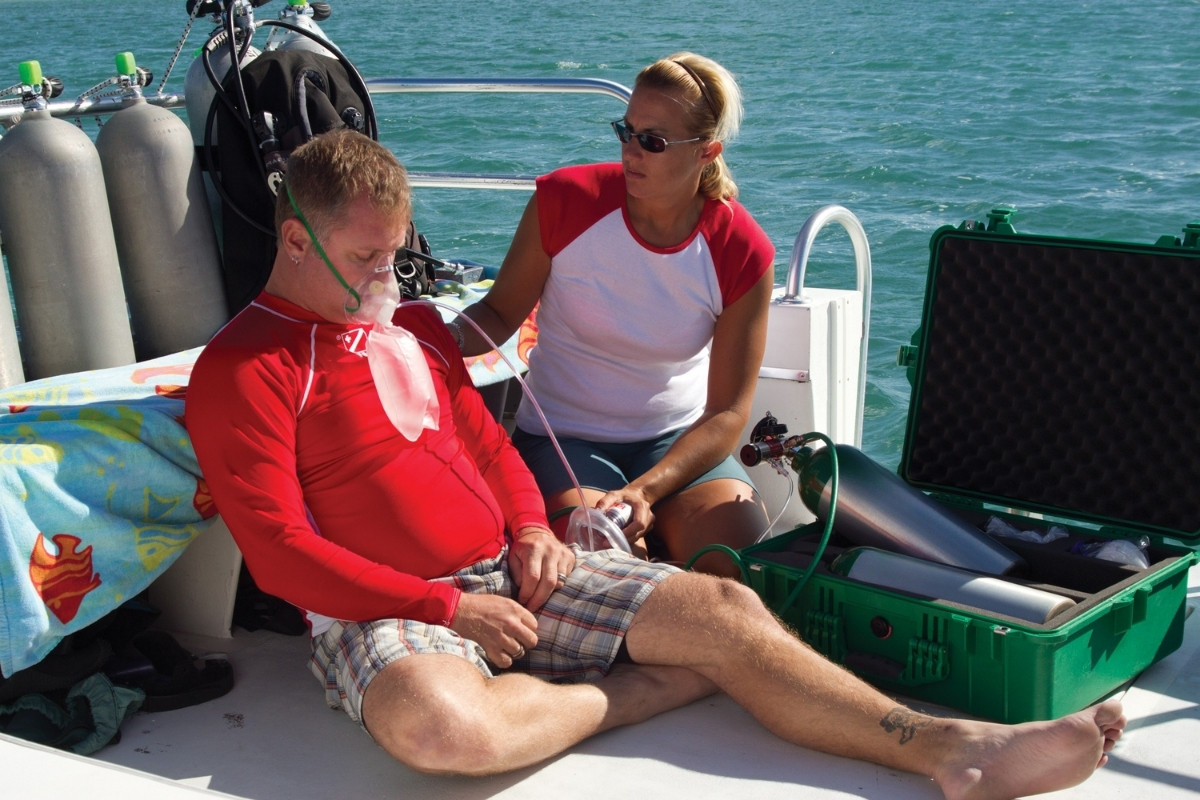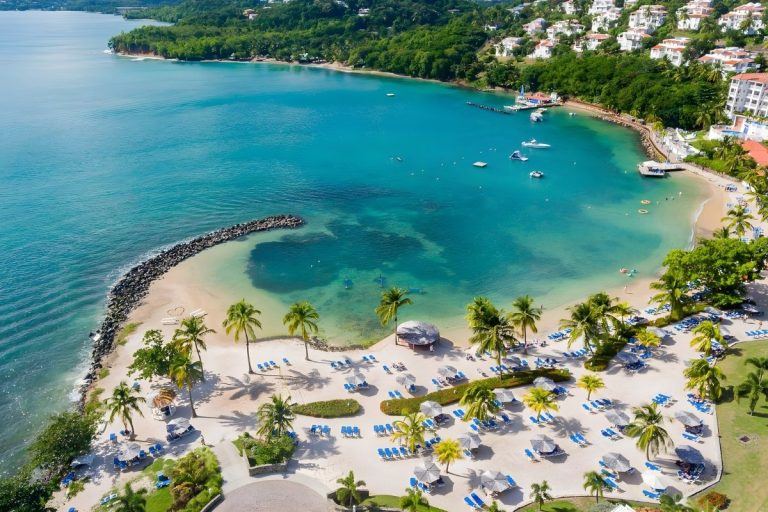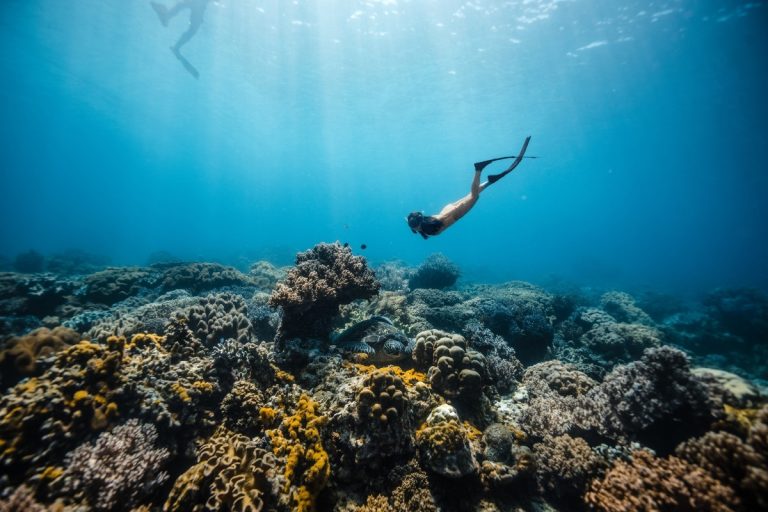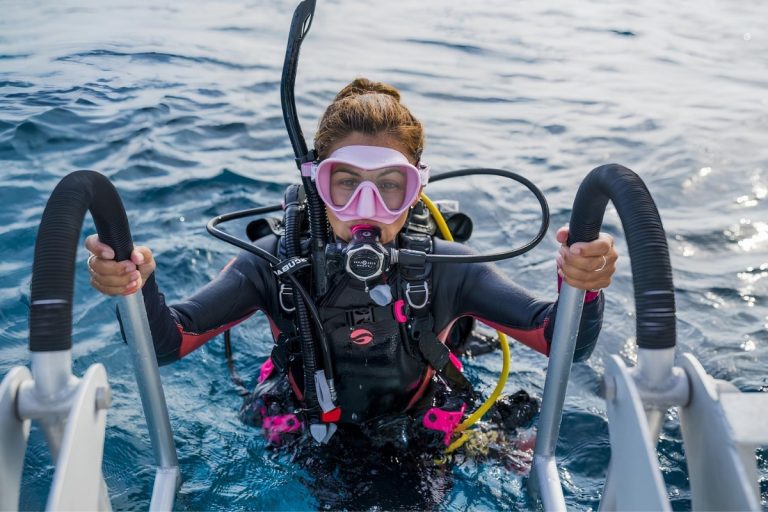- Understanding Decompression Sickness
- Classification of Decompression Sickness
- Diagnosis of Decompression Sickness
- Treatment of Decompression Sickness
- Prevention Strategies for Decompression Sickness
- Risk Management in Diving
- Post-Dive Monitoring and Care
- Resources for Divers
- Frequently Asked Questions
- Ensuring Safe Diving Practices
Understanding Decompression Sickness
Decompression sickness represents one of the most serious risks facing recreational and professional divers worldwide. This condition occurs when dissolved gases, primarily nitrogen, form bubbles within your body’s tissues and blood vessels during rapid pressure changes. When you ascend too quickly from depth, the dramatic reduction in ambient pressure can cause these dissolved gases to come out of solution, creating bubbles that obstruct blood flow and damage surrounding tissues.
The physiological mechanism behind decompression sickness involves Henry’s Law, which states that the amount of gas dissolved in a liquid is proportional to the pressure of that gas above the liquid. As you descend underwater, increased pressure forces more nitrogen from your breathing gas to dissolve into your blood and tissues. During ascent, this process reverses, but if you rise too quickly, the nitrogen cannot be eliminated safely through your lungs, instead forming harmful bubbles throughout your body.
Understanding this process helps divers appreciate why controlled ascent rates and proper decompression procedures are absolutely critical for safe diving. The formation of these nitrogen bubbles can lead to vascular obstruction, inflammation, and significant tissue damage if not properly managed. To learn more about decompression illness and its comprehensive treatment approaches, divers should familiarize themselves with the latest medical research and emergency protocols.
Definition and Mechanism of DCS
Decompression sickness fundamentally results from the physical properties of gases under pressure and how they interact with human physiology. When breathing compressed air underwater, nitrogen dissolves into your bloodstream and tissues at rates determined by depth, time, and individual physiological factors. The deeper you go, the more nitrogen your body absorbs.
During ascent, this dissolved nitrogen must be eliminated gradually through your respiratory system. If ascent occurs too rapidly, nitrogen cannot be processed efficiently, leading to bubble formation in various body compartments including joints, muscles, nervous system, and circulatory system.
Types of Decompression Sickness
Medical professionals classify decompression sickness into distinct categories based on the body systems affected and symptom severity. Type I DCS primarily affects the musculoskeletal system, skin, and lymphatic vessels, typically presenting with joint pain, skin rashes, and localized swelling. These symptoms, while uncomfortable, are generally less life-threatening than other forms.
Type II DCS involves the central nervous system, including the brain and spinal cord, presenting with more serious neurological symptoms. Type III DCS affects the pulmonary system, causing respiratory complications that can be immediately dangerous to life and health.
Symptoms of DCS
Early recognition of decompression sickness symptoms can mean the difference between full recovery and permanent disability. Joint pain, particularly in shoulders, elbows, wrists, hips, and knees, represents the most common initial symptom, often described as a deep, aching sensation that worsens with movement.
Neurological symptoms may include dizziness, confusion, difficulty speaking, weakness in extremities, and sensory changes. Skin manifestations can range from itching and rashes to more serious mottled discoloration patterns. Respiratory symptoms might include chest pain, difficulty breathing, and persistent coughing.
Risk Factors for DCS
Several factors increase your susceptibility to decompression sickness beyond simple depth and time considerations. Dehydration significantly elevates risk by reducing your body’s ability to eliminate dissolved gases efficiently. Cold water diving increases risk through altered circulation patterns and potential hypothermia effects.
Individual physiological factors play important roles, including age over 30, obesity, recent alcohol consumption, fatigue, and certain heart conditions like patent foramen ovale. Previous injuries, particularly to joints and bones, can create areas where bubble formation is more likely to occur and cause symptoms.
Classification of Decompression Sickness
The medical classification system for decompression sickness helps healthcare providers determine appropriate treatment protocols and predict potential outcomes. This systematic approach ensures that divers receive the most effective care based on their specific symptom patterns and affected body systems. Understanding these classifications helps divers recognize the severity of their condition and communicate effectively with medical professionals.
Each type of decompression sickness presents unique challenges and requires different treatment approaches. The classification system also helps diving professionals and safety officers assess risk levels and implement appropriate emergency response procedures. Modern diving medicine continues to refine these classifications as our understanding of decompression physiology improves.
Type I Symptoms
Type I decompression sickness primarily affects peripheral body systems and typically presents with less immediately life-threatening symptoms. Joint pain, known medically as arthralgia, represents the hallmark of Type I DCS, affecting large joints like shoulders, elbows, hips, and knees most commonly. This pain often develops gradually and may initially be dismissed as normal post-dive fatigue.
Skin symptoms associated with Type I DCS include itching, rashes, and sometimes a distinctive mottled appearance called cutis marmorata. Lymphatic involvement can cause localized swelling and discomfort, particularly in areas where lymph nodes are concentrated.
Type II Symptoms
Type II decompression sickness involves the central nervous system and represents a medical emergency requiring immediate intervention. Neurological symptoms can affect the brain, spinal cord, or peripheral nerves, potentially causing permanent disability if not treated promptly. Common presentations include weakness or paralysis in extremities, sensory disturbances, difficulty with coordination and balance, and cognitive impairment.
Spinal cord involvement often presents with back pain, weakness in legs, difficulty with bladder or bowel control, and altered sensation below the level of injury. Brain involvement may cause confusion, memory problems, difficulty speaking, visual disturbances, and altered consciousness levels.
Type III Symptoms
Type III decompression sickness affects the respiratory system and can rapidly become life-threatening. Pulmonary symptoms typically develop quickly after surfacing and may include severe chest pain, difficulty breathing, persistent coughing, and a feeling of suffocation. These symptoms result from bubble formation in pulmonary blood vessels, causing inflammation and fluid accumulation in lung tissues.
The combination of respiratory distress with other DCS symptoms creates a medical emergency requiring immediate oxygen administration and rapid transport to a hyperbaric treatment facility. Type III symptoms often occur alongside other forms of DCS, complicating treatment and potentially worsening outcomes.
Diagnosis of Decompression Sickness
Diagnosing decompression sickness relies heavily on clinical assessment rather than specific laboratory tests or imaging studies. Healthcare providers must carefully evaluate diving history, symptom onset timing, and physical examination findings to make accurate diagnoses. The absence of definitive diagnostic tests means that medical professionals must maintain high levels of suspicion when evaluating divers with potential DCS symptoms.
Prompt and accurate diagnosis directly impacts treatment success and long-term outcomes. Delays in recognition and treatment can lead to permanent neurological damage, chronic pain, and other lasting complications. Emergency medical personnel and hyperbaric medicine specialists work together to ensure rapid evaluation and appropriate treatment initiation.
Clinical Diagnosis Criteria
The clinical diagnosis of decompression sickness requires careful correlation of diving exposure history with symptom presentation and timing. Medical professionals evaluate factors including maximum depth reached, bottom time, ascent rate, surface intervals between dives, and any deviations from standard decompression procedures. Symptom onset typically occurs within the first hour after surfacing, though delayed presentations can occur up to 24 hours later.
Physical examination focuses on neurological assessment, joint examination, and evaluation of skin changes. Healthcare providers also assess vital signs, oxygen saturation levels, and overall cardiovascular status to determine treatment priorities and monitor for complications.
Imaging Techniques for Diagnosis
While no imaging study can definitively diagnose decompression sickness, several techniques help evaluate complications and rule out other conditions. Chest X-rays may reveal pulmonary complications or pneumothorax, while CT scans can identify brain or spinal cord abnormalities in cases with neurological symptoms.
MRI studies sometimes show changes in brain or spinal cord tissues affected by bubble formation, though these findings may not appear immediately. Echocardiography can detect patent foramen ovale or other cardiac abnormalities that increase DCS risk, helping guide future diving recommendations.
Differential Diagnosis
Healthcare providers must consider various other conditions that can mimic decompression sickness symptoms. Musculoskeletal injuries from diving activities, inner ear barotrauma, nitrogen narcosis effects, and equipment-related injuries can all present with similar symptoms. Neurological conditions unrelated to diving, such as stroke or seizure disorders, must also be considered.
The diving history and symptom timing usually help distinguish DCS from other conditions, but careful evaluation remains essential. When doubt exists, medical professionals typically err on the side of caution and initiate DCS treatment protocols while continuing diagnostic evaluation.
Treatment of Decompression Sickness
Effective treatment of decompression sickness requires immediate recognition and rapid implementation of established medical protocols. The primary goals include reducing bubble size, improving tissue oxygenation, and preventing further bubble formation while addressing complications and supporting vital functions. Success depends heavily on early intervention, as delays can result in permanent tissue damage and reduced treatment effectiveness.
Treatment protocols have evolved significantly over decades of diving medicine research and clinical experience. Modern approaches emphasize aggressive initial management followed by comprehensive supportive care and careful monitoring for complications. The integration of emergency medical services, hyperbaric medicine specialists, and diving medicine experts ensures optimal patient outcomes.
Immediate Treatment Protocols
The first priority in suspected decompression sickness involves administering 100% oxygen at the highest possible flow rate, typically 15 liters per minute via non-rebreather mask. This high-concentration oxygen helps reduce bubble size through improved pressure gradients and enhances tissue oxygenation in areas affected by bubble-induced circulation problems.
Intravenous fluid administration addresses dehydration and helps maintain adequate blood pressure and circulation. Healthcare providers typically use normal saline or lactated Ringer’s solution to restore fluid balance and support cardiovascular function. Pain management may include appropriate medications, though certain drugs should be avoided due to potential interactions with hyperbaric treatment.
Role of Hyperbaric Oxygen Therapy
Hyperbaric oxygen therapy represents the definitive treatment for decompression sickness, utilizing increased atmospheric pressure to compress existing bubbles and enhance oxygen delivery to affected tissues. Treatment occurs in specialized chambers where patients breathe 100% oxygen under pressures typically 2.5 to 3 times normal atmospheric pressure.
The increased pressure physically reduces bubble size according to Boyle’s Law, while high oxygen concentrations create favorable gradients for nitrogen elimination and improve tissue oxygenation. Treatment protocols vary based on symptom severity and patient response, with sessions typically lasting several hours and sometimes requiring multiple treatments over several days.
Long-term Management and Follow-up
Recovery from decompression sickness often requires ongoing medical supervision and rehabilitation services. Neurological symptoms may improve gradually over weeks or months, requiring physical therapy, occupational therapy, and regular neurological assessments. Some patients experience residual symptoms that may be permanent, necessitating long-term management strategies.
Follow-up care includes evaluation of fitness for future diving activities, which may be restricted or prohibited depending on the severity of the initial episode and presence of residual symptoms. Patients with significant neurological involvement may require permanent diving restrictions to prevent recurrence.
Prevention Strategies for Decompression Sickness
Prevention remains the most effective approach to managing decompression sickness risk, as even successful treatment may not completely reverse all effects of the condition. Comprehensive prevention strategies encompass proper dive planning, adherence to established safety protocols, and maintenance of optimal physical condition for diving activities. These approaches significantly reduce the likelihood of DCS occurrence while enhancing overall diving safety and enjoyment.
Modern diving education emphasizes prevention through understanding of decompression theory, proper use of diving computers and tables, and recognition of individual risk factors. Safe diving practices become second nature through proper training and consistent application of conservative diving principles. When planning your next underwater adventure, remember that safe diving practices should always be your top priority, whether you’re exploring budget-friendly dive vacations or premium destinations.
- Conservative Dive Planning: Always plan dives within established no-decompression limits with additional safety margins
- Proper Equipment Maintenance: Ensure all diving equipment functions correctly and is properly serviced
- Physical Fitness: Maintain good cardiovascular health and avoid diving when feeling unwell
- Environmental Awareness: Consider water temperature, currents, and other environmental factors in dive planning
- Buddy System: Always dive with a properly trained partner and maintain close communication
- Emergency Preparedness: Know emergency procedures and have access to emergency oxygen and communication devices
Controlled Ascent Rates
Maintaining proper ascent rates represents one of the most critical factors in preventing decompression sickness. The standard recommendation of ascending no faster than 30 feet per minute allows dissolved nitrogen adequate time to be eliminated through the respiratory system rather than forming bubbles in tissues. Many diving computers now recommend even slower ascent rates, particularly during the final portion of ascent.
The last 15 feet of ascent deserve particular attention, as the relative pressure change is greatest in shallow water. Many experienced divers adopt ascent rates as slow as 10 feet per minute during this critical phase, allowing maximum time for gas elimination.
Decompression Stops
Safety stops, typically performed at 15 feet for 3-5 minutes, provide additional time for nitrogen elimination even on no-decompression dives. These stops have become standard practice in recreational diving and significantly reduce DCS risk. For deeper or longer dives requiring mandatory decompression stops, strict adherence to calculated stop times and depths is essential.
Deep stops, performed at intermediate depths during ascent, may provide additional safety margins by allowing gradual pressure reduction and nitrogen elimination. However, recent research suggests that excessive deep stop time may actually increase DCS risk in some situations, emphasizing the importance of following current best practices.
Hydration and Health Monitoring
Proper hydration plays a crucial role in DCS prevention by maintaining optimal blood circulation and supporting efficient gas elimination. Divers should begin hydrating well before diving activities and continue throughout the day. Alcohol consumption should be avoided for at least 12 hours before diving, as it promotes dehydration and may impair judgment.
Health monitoring includes recognizing when conditions are not optimal for diving. Factors such as fatigue, recent illness, medication use, and stress can increase DCS susceptibility and should be carefully considered before entering the water.
Risk Management in Diving
Effective risk management in diving requires systematic assessment of potential hazards and implementation of appropriate mitigation strategies. This comprehensive approach considers environmental conditions, equipment factors, diver experience and training, and specific dive objectives to create safe diving experiences. Risk management extends beyond individual dives to encompass entire diving careers and long-term safety planning.
Professional diving operations and recreational dive centers increasingly emphasize risk management principles in their training and operational procedures. This systematic approach helps identify potential problems before they become emergencies and ensures appropriate resources are available when needed. Understanding risk management principles helps divers make informed decisions about their diving activities and safety protocols.
Identifying High-Risk Dives
Certain diving scenarios present elevated risks for decompression sickness and require additional safety precautions. Deep dives beyond 100 feet, long bottom times approaching no-decompression limits, repetitive diving over multiple days, and cold water diving all increase DCS risk. Technical diving activities such as wreck penetration, cave diving, and mixed-gas diving require specialized training and equipment.
Environmental factors including strong currents, poor visibility, and challenging entry or exit conditions can increase stress and exertion levels, potentially elevating DCS risk. Divers should honestly assess their experience and comfort levels when considering challenging dive conditions.
Using Dive Computers for Safety
Modern dive computers provide real-time decompression information and safety guidance, but they require proper understanding and conservative use. These devices calculate nitrogen loading based on depth and time profiles, providing warnings when approaching no-decompression limits and calculating required decompression stops when necessary.
Conservative settings and safety factors built into computer algorithms provide additional margins, but divers should understand that computers cannot account for all individual risk factors. Using multiple computers or backup tables provides redundancy and additional safety margins for critical dives.
Planning Safe Dive Trips
Comprehensive dive trip planning considers factors beyond individual dive profiles, including travel fatigue, altitude changes, equipment logistics, and emergency medical resources. Flying after diving requires careful attention to surface interval requirements, typically 12-18 hours after no-decompression dives and longer periods after decompression diving.
When you explore budget-friendly dive vacations, don’t compromise on safety standards or emergency preparedness. Research local diving conditions, medical facilities, and emergency evacuation procedures before traveling. Ensure your diving insurance coverage includes hyperbaric treatment and emergency evacuation if needed.
Post-Dive Monitoring and Care
Careful post-dive monitoring represents a critical component of comprehensive diving safety, as decompression sickness symptoms can develop hours after surfacing. Understanding what to watch for and when to seek medical attention can prevent minor symptoms from progressing to serious complications. This vigilance extends beyond the immediate post-dive period, as some symptoms may not appear until the following day.
Proper post-dive care also includes activities that support your body’s natural gas elimination processes and reduce the likelihood of bubble formation. These practices become particularly important after deeper or longer dives, repetitive diving days, or when diving in challenging conditions that may increase DCS risk.
Symptoms to Monitor After Diving
Post-dive symptom monitoring should focus on the most common early indicators of decompression sickness, including joint pain, unusual fatigue, skin changes, and neurological symptoms. Joint pain that develops gradually and worsens over time deserves particular attention, especially if it affects large joints like shoulders, hips, or knees.
Neurological symptoms requiring immediate attention include dizziness, confusion, difficulty with coordination, weakness in extremities, or changes in sensation. Skin symptoms such as itching, rashes, or mottled discoloration patterns should also prompt medical evaluation, particularly when they appear in conjunction with other symptoms.
When to Seek Medical Attention
Any suspected decompression sickness symptoms warrant immediate medical evaluation, as early treatment significantly improves outcomes. Don’t wait for symptoms to worsen or hope they will resolve spontaneously. Contact emergency medical services or diving emergency hotlines for guidance when symptoms develop after diving activities.
The Divers Alert Network (DAN) emergency hotline provides 24-hour consultation services for diving-related medical emergencies and can help coordinate appropriate treatment resources. Local emergency medical services should be contacted immediately for severe symptoms, while DAN can provide guidance for less urgent situations.
Importance of Post-Dive Hydration
Maintaining adequate hydration after diving supports your body’s natural nitrogen elimination processes and helps prevent bubble formation. Continue drinking water regularly throughout the post-dive period, avoiding alcohol and excessive caffeine consumption that can promote dehydration.
Light physical activity such as walking can promote circulation and gas elimination, but avoid strenuous exercise that might provoke bubble formation or mask developing symptoms. Rest when feeling fatigued, and pay attention to your body’s signals during the critical post-dive monitoring period.
Resources for Divers
Access to reliable information and emergency resources represents an essential component of safe diving practices. Modern divers have unprecedented access to educational materials, emergency services, and community support networks that enhance safety and promote continuous learning. Understanding how to access and utilize these resources can make the difference between a minor incident and a major emergency.
The diving community’s commitment to safety and education has created extensive networks of support and information sharing. From online forums and educational websites to emergency response services and medical consultation, these resources provide comprehensive support for divers at all experience levels. Whether you’re planning to check out the top dive sites around Hong Kong or exploring local waters, having access to proper resources ensures safer and more enjoyable diving experiences.
Educational Materials on DCS
Comprehensive educational resources about decompression sickness are available through diving certification agencies, medical organizations, and specialized diving safety groups. The Divers Alert Network publishes extensive research and educational materials covering all aspects of diving medicine and safety. Professional diving organizations regularly update their training materials to reflect current best practices and medical understanding.
Online courses, webinars, and continuing education programs help divers stay current with evolving safety recommendations and treatment protocols. Many resources are available in multiple languages and formats to accommodate different learning preferences and accessibility needs.
Emergency Contact Information for Divers
Every diver should maintain current emergency contact information, including local emergency medical services, diving emergency hotlines, and nearby hyperbaric treatment facilities. The DAN emergency hotline (+1-919-684-9111) provides 24-hour consultation and can help coordinate emergency treatment anywhere in the world.
Local emergency numbers vary by location, so research and record appropriate contacts before diving in new areas. Many diving computers and smartphone apps can store emergency contact information for quick access during emergencies.
Community Support and Forums
Online diving communities and forums provide valuable platforms for sharing experiences, asking questions, and learning from other divers’ experiences. These communities often include medical professionals, technical diving experts, and experienced recreational divers who can provide insights and guidance.
Local diving clubs and organizations offer opportunities for continued education, mentorship, and social connections within the diving community. Participating in these groups helps maintain diving skills, stay current with safety practices, and build networks of diving partners and safety support.
Frequently Asked Questions
What is decompression sickness?
Decompression sickness occurs when dissolved gases, primarily nitrogen, form bubbles in the body’s tissues and blood vessels due to rapid pressure changes, typically during scuba diving.
What are the symptoms of decompression sickness?
Common symptoms include joint pain, dizziness, confusion, difficulty speaking, weakness in limbs, skin rashes, and respiratory distress.
How can decompression sickness be prevented?
Prevention includes conservative dive planning, maintaining proper ascent rates, ensuring equipment is well-maintained, staying hydrated, and being aware of individual health factors.
What is the treatment for decompression sickness?
Treatment involves administering 100% oxygen, intravenous fluids, and hyperbaric oxygen therapy to reduce bubble size and enhance oxygen delivery to affected tissues.
When should a diver seek medical attention for decompression sickness?
Any suspected symptoms of decompression sickness should prompt immediate medical evaluation, as early treatment is crucial for better outcomes.
Ensuring Safe Diving Practices
Understanding and implementing effective strategies for decompression sickness prevention is vital for divers. By adhering to safety protocols, maintaining good health, and being aware of one’s surroundings, divers can significantly reduce their risk of DCS and enjoy safer underwater adventures.






